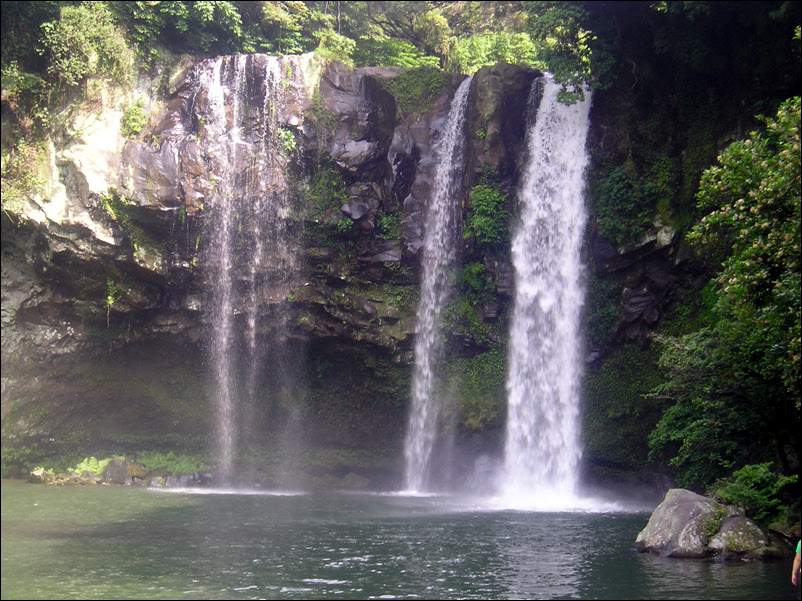
Jeju (Cheju) Island
Jeju Island is one of the premier tourist destinations in Korea because of the stunning natural scenery and superior tourist amenities. Scenic beaches, waterfalls, cliffs and caves lie in harmony, and the mild weather makes Jeju Island an even more ideal tourist destination. Mt. Hallasan in Jeju Island has flora and fauna of both temperate and tropical varieties, coexisting on the mountain.
Mt. Hallasan National Park: Mt. Hallasan stands tall in the middle of Jeju Island. It is also called Mt. Yeongjusan, meaning a mountain high enough to pull the galaxy. Mt. Hallasan is widely acknowledged by scholars for its research values. Designated as a National Park in 1970, there are 368 parasitic mountains called "Ohreum(peaks)" around Mt. Hallasan. From its warm climate to the cold climate areas, Mt. Hallasan is famous for its vertical ecosystem of plants.
1,800 kinds of plants and 4,000 species of animals (3,300 species of insects) inhabit here, and due to the well-developed climbing paths, you can carefully observe the surroundings. Mt. Hallasan is a short climbing course. Less than 10km in length, it is possible to reach the peak and come back down in one day. (Mr Asia suggests) - The weather conditions often change and there is a lot of wind, so you must be well prepared before going up the mountain.
Seongeup Folk Village: Located at the foot of Mt. Hallasan, Seongeup Folk village has perfectly preserved Korean tradition. It has been designated a Folk Village because of the vast amount of cultural property here. There are many cultural properties such as residential houses, Confucian shrines and schools, ancient government offices, stone statues, millstones (run by horse or ox), fortress ruins, stone monuments, and cultural assets such as folk plays, native foods, local folk craftsmanship, and the local dialect are handed down to this day.
Manjanggul Cave: Manjanggul Cave is one of the finest lava tunnels in the world, and is a designated natural monument. The cave has a variety of interesting structures inside including 70cm lava stalagmites and the lava tube tunnels. Only 1km of the 3,422m Manjanggul Cave is open to the tourists.
Halla Arboretum: Halla Arboretum was established for the study and the preservation of the natural environment. Opened in December 1993, Gwangioreum there are 909 kinds of native trees and subtropical plants exhibited here. In the gardens there are 506 kinds of trees and 90 kinds of plants, and in the greenhouse there is the Subtropical Plant Hall (105 kinds) and the Native Plant Hall (103 kinds) with a total of 208 types of plants. There are 2,722 stumps of endangered and rare plants such as the Michelia Compressa and Euchresta Japonica, and the Chloranthus Glaber that only grows at Cheonjiyeon. At Halla Arboretum you can meet the four-season flower forest, colourful forests, and the beautiful seasons of mother nature at Halla.
Jeju Folk Museum: Jeju Folk Museum is a public museum which carries many folk treasures of Jeju island's inhabitants. The museum preserves about 10,000 artefacts, and those we can actually see on display are about 3,000, such as folk instruments made of bamboo, dry rice-straws, and rocks. You can see fascinating items related to local religions, preserved from the old times, or ones involving old traditions of the area, and visit straw-roofed houses. Especially eye-catching sights are the traditional Jeju costume Galot, and Aegigudeok (baby's cradle), the musical instrument "Ulsoe", made up of five kinds of mirrors, and "Dorongi", rain coat made of straw.
|
|